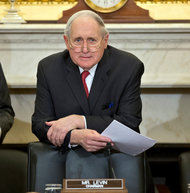NBC News is replacing the longtime director of “Today” in the latest sign of a top-to-bottom overhaul at the morning show, which is trying to climb out of a second-place ratings pit after a painful year there.
Joe Michaels, who has worked at the show since 1989 and has been the director for 18 years, was given a new job last week that portends more change to come. Mr. Michaels will be the senior director, responsible for the installation of a new “Today” show set and graphics style, among other initiatives.
Mr. Michaels was caught off-guard by the change, according to associates of his. The network has yet to name a new director, which is a crucial position in a television control room because the person calls the camera shots and communicates other instructions to the staff.
A spokeswoman for “Today” declined to comment. But in an internal memorandum last Friday, the “Today” show executive producer, Don Nash, wrote, “We are looking at every aspect of the show — tweaking where the show needs tweaking, overhauling where the show needs overhauling. Many changes have been implemented already, many more are in the works.”
“The most critical projects need oversight from a strong, knowledgeable and experienced leader,” Mr. Nash said of Mr. Michaels’s move.
The most pressing project is a renovation of Rockefeller Center’s Studio 1A, the home of the show’s street-level set since 1994. It has not been redesigned since 2006. In August the show will move to a temporary summer set on Rockefeller Plaza, as it did in ’06, for construction of the new set, which will make its debut in early fall.
Mr. Michaels, who has been at NBC his entire career and is a major part of the show’s institutional memory, will also help with strategic “big picture” planning, said an executive with knowledge of the situation, who insisted on anonymity to talk about internal matters that the network had not discussed publicly.
The executive said, “We want to rethink everything” at the morning show, even the use of the outdoor plaza where the show’s fans gather every morning for a glimpse of Matt Lauer and his co-hosts: “We’re rethinking the plaza experience.”
Seemingly the only thing that is not under consideration is a casting change.
The personnel moves there started last fall when Jim Bell, the head of the show for nearly eight years, was replaced by Mr. Nash and Alex Wallace, who was named the executive in charge of the show. Last month, two executive producers were installed directly underneath Mr. Nash: Tom Mazzarelli, who oversees the show from 7 to 8 a.m., and Tammy Filler, who oversees it from 9 to 10 a.m.
“Today” is the top priority of the next president of NBC News, Deborah Turness, who will take over in August. “Today” staff members expect further organizational changes after Ms. Turness starts her job.

Article source: http://www.nytimes.com/2013/06/19/business/media/nbc-replaces-veteran-director-of-today.html?partner=rss&emc=rss


